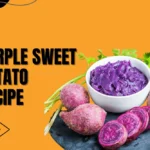Blue vegetables may not be as common as their green or red counterparts, but they are an eye-catching addition to any plate. From vibrant blue potatoes to delicate blue corn, these unique and visually appealing vegetables offer more than just color. They are packed with essential nutrients, antioxidants, and health benefits promoting well-being.
Here, we will explore the fascinating world of blue veggies, their origins, nutritional value, and how to incorporate them into your diet. Get ready to discover a new range of flavors and nuances that will delight your taste buds and eyes.
Recommended: What Vegetables Should Not Be Juiced
What Are Blue Vegetables?
Blue vegetables are a unique and rare category with a distinct blue color. Although not as common as other colorful vegetables, blue vegetables offer a variety of health benefits and add visual appeal to food. Some blue vegetables are blue potatoes, blue corn, and blueberries.
These vegetables contain natural pigments called anthocyanins, which give them their bright blue hue. Anthocyanins are known for their antioxidant properties and have been linked to various health benefits, including reducing the risk of chronic disease and promoting heart health. Adding blue-green vegetables to your diet can be a fun and nutritious way to add variety to your meals.
Different Types Of Blue Vegetables

There are many types of blue vegetables, each with unique properties and nutritional value. These blue vegetables add vibrant color to your plate and provide many essential nutrients.
Here are some examples of different blue vegetables:
Blue Potatoes
Blue potatoes, also known as purple potatoes, have deep blue or purple skin and flesh. They are rich in antioxidants called anthocyanins, which give them their characteristic color. Blue potatoes are a good source of fiber, vitamin C, potassium, and iron. They have a slightly nutty flavor and can be boiled, roasted, pureed, or used in various culinary preparations.
Blue Corn
Blue corn is a type of corn that has a bluish-purple color. It is commonly used to make tortillas, chips, and other corn products. Blue corn contains higher levels of antioxidants than yellow or white corn varieties. It is also fiber-rich and provides essential minerals like magnesium and zinc.
Blue Kale
Blue kale, also known as Lacinato kale or dinosaur kale, has dark blue-green leaves with a bumpy texture. It is packed with nutrients such as vitamins A, C, and K and minerals like calcium and manganese. Blue kale has a slightly sweeter and milder taste than other kale varieties. It can be enjoyed raw in salads or cooked in stir-fries, soups, or sautés.
Blue Green Algae
Blue-green algae, such as spirulina and chlorella, are microscopic organisms that grow in freshwater lakes and ponds. Their color is blue-green due to pigments such as chlorophyll and phycocyanin. Blue-green algae are considered a superfood due to their high protein content and abundance of vitamins, minerals, and antioxidants. They are often consumed as a powder and added to smoothies, juices, or other food preparations.
Blue Asparagus
Blue asparagus, or purple asparagus, is a bright bluish-purple color. It is a variant of green asparagus and gets its color from anthocyanins. Blue asparagus has a slightly sweeter and milder flavor compared to green asparagus. It is a good source of fiber, folate, vitamins A and C, and antioxidants.
Nutritional Value Of Blue Vegetables
| Vegetable | Serving Size (100g) | Calories | Carbohydrates (g) | Fiber (g) | Protein (g) | Fat (g) |
| Blue Potatoes | 100g | 72 | 16.4 | 2.2 | 2.0 | 0.1 |
| Blue Corn | 100g | 342 | 74.3 | 7.3 | 9.4 | 4.7 |
| Blue Asparagus | 100g | 20 | 3.9 | 2.0 | 2.2 | 0.2 |
| Blue Kale | 100g | 49 | 8.8 | 3.6 | 4.3 | 1.0 |
| Blue Cabbage | 100g | 25 | 6.0 | 2.5 | 1.3 | 0.1 |
| Blue Brussels Sprouts | 100g | 43 | 9.0 | 3.8 | 3.4 | 0.3 |
How Do Blue Vegetables Get Their Color?
Blue vegetables get their color from a group of pigments called anthocyanins. Anthocyanins are water-soluble pigments that belong to the flavonoid family. These pigments are responsible for various fruits and vegetables’ blue, purple, and red colors.
The blue color of vegetables is due to the unique chemical structure of anthocyanins, which absorb light from the blue region of the visible spectrum and reflect it to our eyes. Some blue vegetables are blue potatoes, blue corn, and blueberries. The presence of anthocyanins gives these vegetables their bright blue color and offers several health benefits due to their antioxidant and anti-inflammatory properties.
Are Blue Vegetables Naturally Occurring Or Genetically Modified?
Blue vegetables can occur naturally or genetically modified. Some blue vegetables, such as blue potatoes and blue corn, are naturally occurring varieties cultivated for their unique color. These vegetables contain natural pigments called anthocyanins, which give them their blue hue.
On the other hand, there are also genetically modified blue vegetables, such as blue tomatoes and blue lettuce, which have been engineered to express the same anthocyanin pigments found in naturally occurring blue vegetables. These genetically modified varieties are created by adding genes from other anthocyanin-producing plants. Therefore, while some blue vegetables occur naturally, others have been genetically modified to produce a blue color.
Health Benefits Of Consuming Blue Vegetables
Blue vegetables are a rich source of nutrients and have been linked to numerous health benefits. Here are some of the critical advantages of consuming blue vegetables:
Antioxidant Properties
Blue vegetables are rich in antioxidants, which help protect the body from damage caused by free radicals. Antioxidants can help reduce inflammation, improve cardiovascular health, and protect against chronic diseases like cancer and cognitive decline.
Immune System Support
Blue vegetables contain anthocyanin, which has been shown to support the immune system. Anthocyanin can help boost the body’s natural defenses and reduce the risk of illness and infection.
Eye Health
Blue vegetables are a good source of lutein and zeaxanthin, two important antioxidants for eye health. These compounds can help reduce the risk of age-related macular degeneration and cataracts.
Cardiovascular Health
Blue vegetables’ fiber, potassium, and antioxidants can help support cardiovascular health by reducing blood pressure, cholesterol levels, and inflammation.
Weight Management
Blue vegetables are low in calories and fiber, making them an excellent choice for those looking to manage their weight. Fiber can help keep you full and satisfied, reducing the need to overeat.
Cancer Prevention
Some studies have suggested that consuming blue vegetables may reduce the risk of certain types of cancer, such as colon and prostate cancer. This is likely due to these vegetables’ high levels of antioxidants and other nutrients.
Culinary Uses Of Blue Vegetables
To any culinary dish, blue vegetables bring something unique and eye-catching. Despite their relative rarity, the variety of aromas and textures that blue veggies offer can improve a fish’s overall flavor and presentation.
Uses of blue veggies in cooking include the following:
Blue Potatoes
Like the well-known variety known as “All Blue,” the vivid blue or purple flesh of blue potatoes gives meals a cheerful splash of color. Mash, roast, or fry them are just a few ways they can be utilized. A fantastic option for visually stunning salads or side dishes, blue potatoes hold their color even after cooking. They taste great as an alternative to conventional potatoes because of their earthy, slightly nutty flavor.
Blue Corn
Known for its vivid blue appearance and rich flavor, blue corn is frequently utilized in traditional Mexican cooking. It can be processed into blue cornmeal, producing tamales, tortillas, and other foods made with maize. Popular blue corn tortilla chips offer a unique twist to classic dips for nachos. Any recipe that uses blue maize benefits from the visual attraction that its vivid blue tint provides.
Blue Kale
Blue kale, commonly referred to as Lacinato kale or dinosaur kale, has more tender, dark green-blue leaves than other kale kinds. It works well as an ingredient in salads, stir-fries, soups, and smoothies because of its softer, slightly sweeter flavor than conventional kale. Blending the blue-hued leaves with different greens can create a visually appealing contrast.
Blue Asparagus
Blue asparagus is present in some kinds. However, it’s less common than purple or green asparagus. Blushing to a light green, these unusual spears have a mild flavor reminiscent of green asparagus. Grilling, roasting, or sautéing are some methods to prepare blue asparagus. It may visually enhance any dish with its vivid color.
Blue Carrots
Blue carrots are lesser-known carrots with an orange interior and vivid blue or purple skin. They can be utilized in raw and cooked recipes, and their flavor is slightly sweeter than typical orange carrots. You may bake blue carrots, grate them into salads, or add some color to vegetable medleys.
Popular Recipes Using Blue Vegetables
Here are three popular recipes that incorporate blue vegetables:
Blue Potato Salad
- Start by boiling blue potatoes until they are tender. Once cooked, let them cool and then cut them into bite-sized pieces.
- Mix mayonnaise, Dijon mustard, minced garlic, chopped dill, lemon juice, salt, and pepper in a separate bowl to create the dressing.
- Add the sauce to the potatoes and toss gently to coat.
- Finally, add diced red onion, chopped celery, and crumbled blue cheese to the salad for flavor and texture. Serve chilled.
Blue Corn Tacos
- Begin by making the blue corn tortillas. Mix blue cornmeal with water, salt, and a small amount of oil until it forms a dough.
- Divide the dough into small balls and flatten them into tortilla shapes using a tortilla press or rolling pin.
- Cook the tortillas on a hot griddle or skillet until lightly browned on both sides.
- For the filling, sauté diced onions and bell peppers in olive oil until soft. Add cooked black beans, corn kernels, diced tomatoes, and your choice of cumin or chili powder.
- Fill each blue corn tortilla with the vegetable filling and top with shredded lettuce, diced avocado, salsa, and a sprinkle of crumbled queso fresco.
Blueberry Spinach Salad
- Combine fresh baby spinach leaves with sliced red onions and crumbled feta cheese in a large bowl.
- Whisk together olive oil, balsamic vinegar, honey, Dijon mustard, salt, and pepper in a separate smaller bowl to create the dressing.
- Drizzle the dressing over the spinach mixture and toss gently to coat all ingredients evenly.
- Add fresh blueberries and toasted almonds to the salad for sweetness and crunch.
- Add grilled chicken or shrimp to make it a more substantial meal.
Potential Side Effects Of Consuming Blue Vegetables
Consuming blue vegetables can have various potential side effects, although they are generally considered safe and beneficial for overall health. It is important to note that these side effects are rare and usually occur when consumed excessively or by individuals with specific health conditions.
Here are some potential side effects of consuming blue vegetables:
Allergic Reactions
Some individuals may be allergic to blue vegetables, such as blueberries or purple potatoes. Allergic reactions can range from mild symptoms like itching and hives to severe reactions like difficulty breathing or anaphylaxis. If you experience any allergic symptoms after consuming blue vegetables, it is recommended to seek medical attention immediately.
Gastrointestinal Issues
Blue vegetables, mainly those high in fiber, can sometimes cause gastrointestinal discomfort in some individuals. This may include symptoms like bloating, gas, diarrhea, or constipation. These side effects are more likely to occur when consuming large quantities of blue vegetables or if you have a sensitive digestive system. Gradually increasing your intake of blue vegetables and drinking plenty of water can help alleviate these symptoms.
Interference with Medications
Blue vegetables contain compounds called anthocyanins, which have antioxidant properties. While this generally benefits health, it can interact with certain medications. For example, due to their antiplatelet effects, blueberries may interfere with blood-thinning medications like warfarin or aspirin. If you are taking any medications, you should consult your healthcare provider before significantly increasing your consumption of blue vegetables.
Staining of Teeth and Urine
Some blue vegetables, such as blueberries or purple carrots, contain natural pigments that can temporarily stain teeth and urine. This staining is harmless and typically fades over time. Regular dental hygiene practices like brushing and flossing can help minimize tooth staining, while increased water intake can dilute the pigments responsible for urine discoloration.
Conclusion
In conclusion, the vibrant world of blue vegetables offers a feast for the eyes and the palate. These unique and visually striking vegetables add a pop of color to any dish and provide a range of health benefits.
Blue vegetables, such as blue potatoes, corn, and purple cauliflower, are rich in antioxidants, vitamins, and minerals that promote overall well-being. They can be incorporated into various recipes, from salads to soups and desserts. So, next time you want to add excitement to your plate, consider exploring the vibrant world of blue vegetables.
FAQs
Are There Any Naturally Blue Vegetables?
Yes, there are naturally blue vegetables. One example is the blue potato, which has a bluish-purple skin and flesh.
What Vegetables Are Blue Purple?
Some blue-purple vegetables include blueberries, purple cabbage, purple sweet potatoes, and eggplants.
What Do Blue Vegetables Do For Your Body?
Blue vegetables contain various beneficial compounds, such as anthocyanins, which are potent antioxidants. These compounds have been linked to reducing inflammation, improving cardiovascular health, boosting brain function, and supporting overall well-being.
How Do I Incorporate Blue Fruits And Vegetables Into My Diet?
Add blue fruits and vegetables to your diet smoothies and salads, or use them as toppings for yogurt or cereal. Additionally, you can include them in baked goods or enjoy them as standalone snacks.
Are Blue Fruits And Vegetables Better Than Other Colors?
Blue fruits and vegetables are not necessarily better than other colors. Each color group offers unique health benefits due to the specific phytochemicals they contain
Do Blue Fruits And Vegetables Have Any Special Properties?
Blue fruits and vegetables have unique properties due to the presence of anthocyanins. These compounds have antioxidant and anti-inflammatory effects, which may help protect against chronic diseases like heart disease, cancer, and neurodegenerative disorders.

![Can You Freeze Blue Cheese? - [ Easiest Ways To Do ] Can You Freeze Blue Cheese](https://juicerhunter.com/wp-content/uploads/2023/09/How-Do-You-Freeze-Blue-Cheese-150x150.webp)

![Homemade Black Carrot Juice - [ Health Benefits and Side Effects ] black carrot juice](https://juicerhunter.com/wp-content/uploads/2023/11/black-carrot-juice-150x150.jpg)


